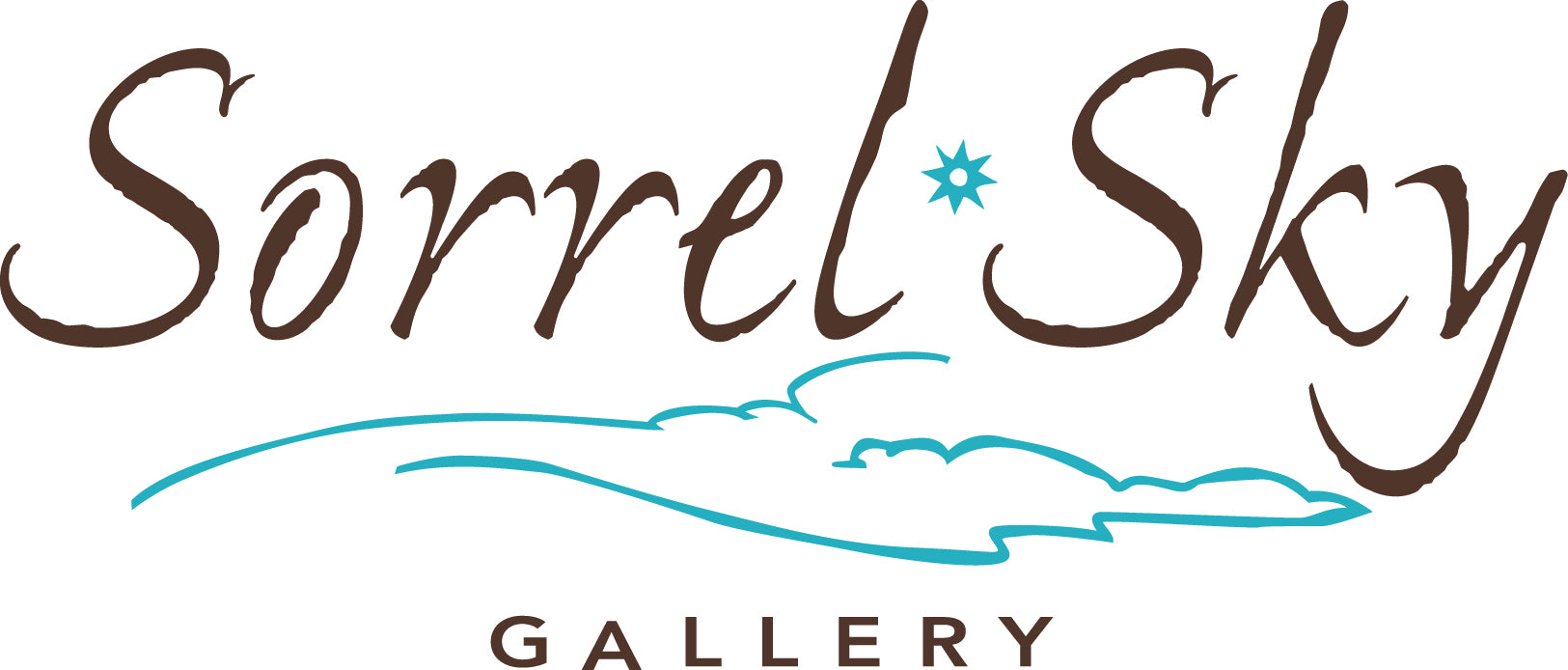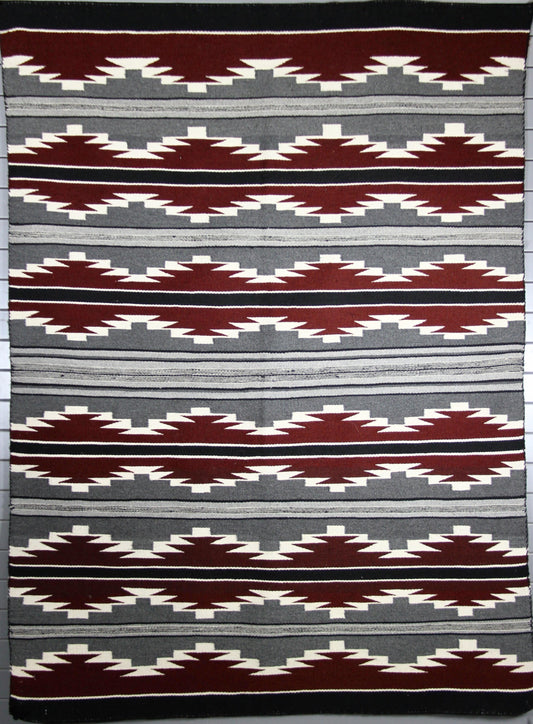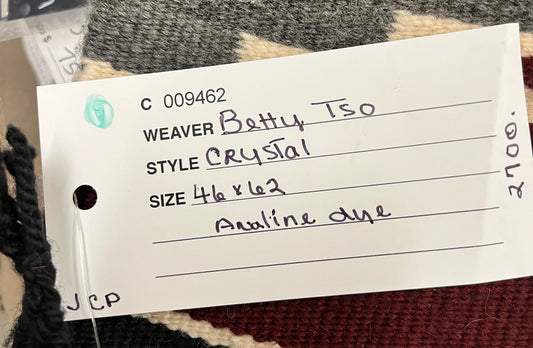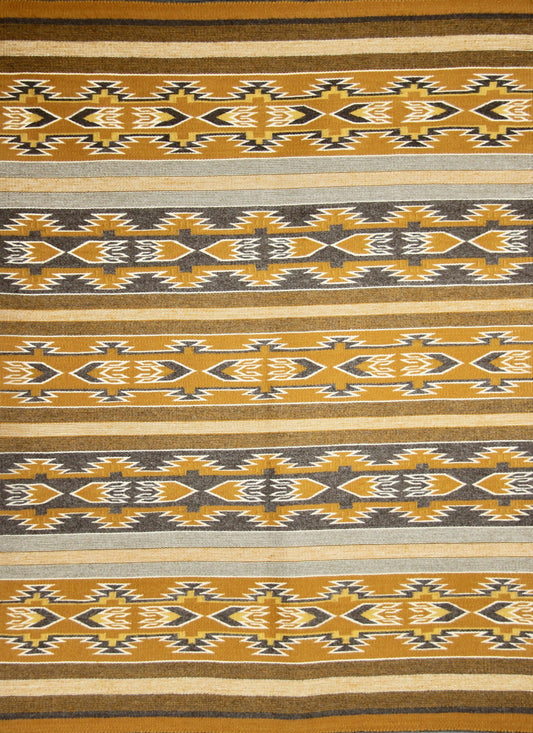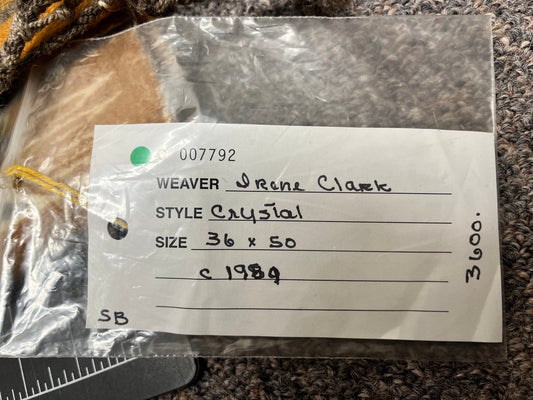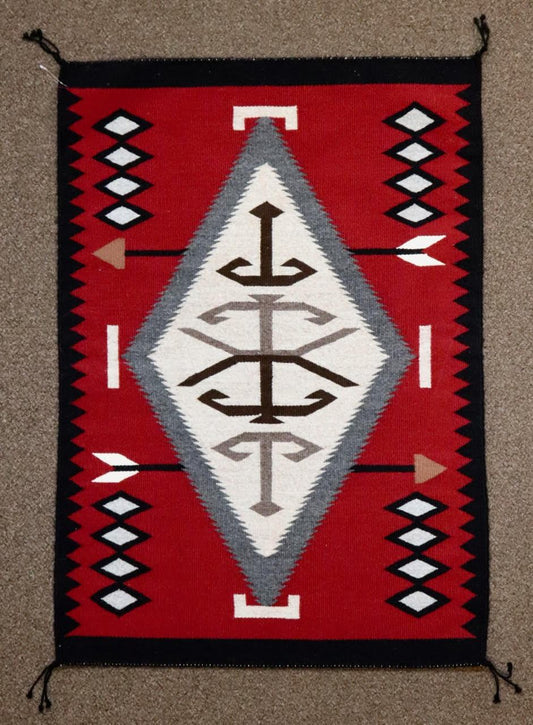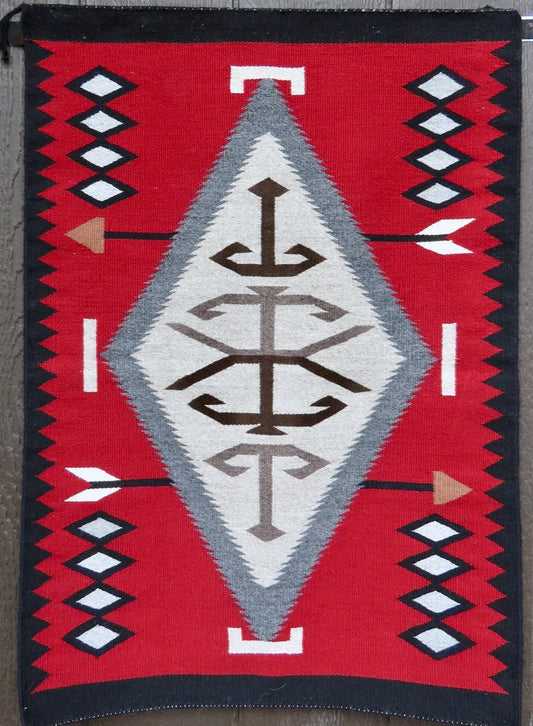Collection: Crystal Area Weavings
-
Vendor:Navajo Weaving
Crystal Style Navajo Weavings
Regular price $ 2,700.00Regular priceUnit price per
No More Products
-
Sold
-
Sold
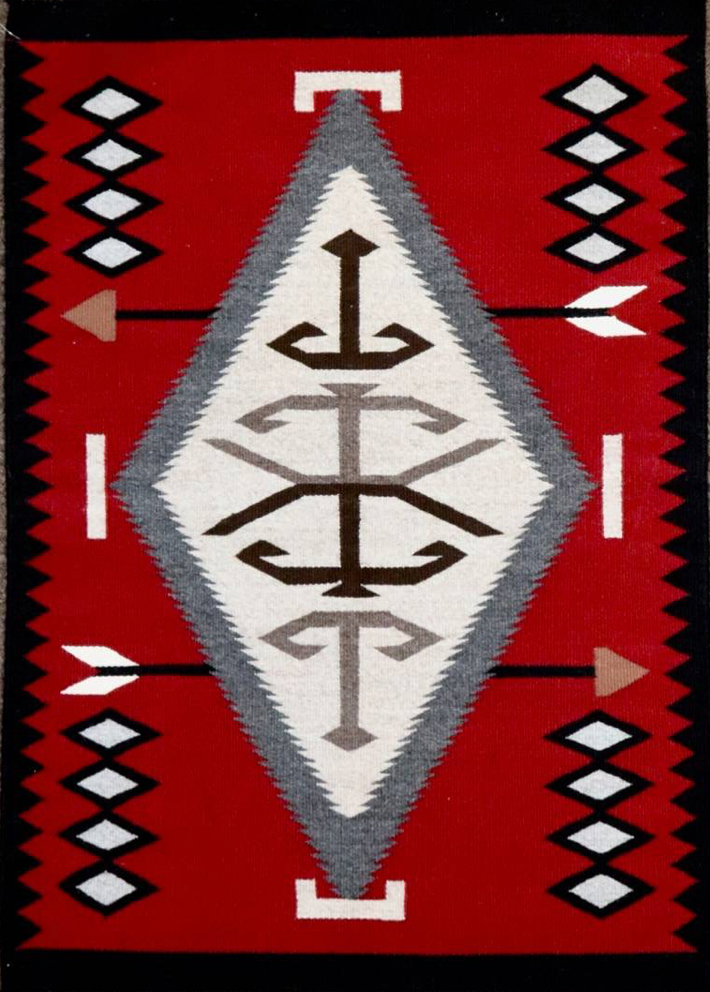
The Crystal Trading Post was on the top of Narbona Pass in the Chuska Mountains. It was located at over 8000 feet above sea level and the winters are long. There are really two stories of weavings from the area. The first began when JB Moore purchased the post and rebuilt it, opening in 1896. He developed a unique style of weaving, based on Turkish and Mediterranean motifs, insisted on quality and created a catalog which he used to market the weavings to Eastern parlors. Moore left the reservation in 1911, but his patterns proliferated and flourished, many ending up in the Two Grey Hills area to the east.
The second style of Crystal showed up in the early 1940’s when the trader, Don Jensen, realized how popular the vegetal dyes at Wide Ruins were becoming and encouraged his weavers to create borderless, striped patterns in vegetal dye colors.
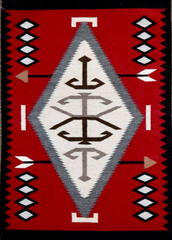
The Crystal Trading Post was on the top of Narbona Pass in the Chuska Mountains. It was located at over 8000 feet above sea level and the winters are long. There are really two stories of weavings from the area. The first began when JB Moore purchased the post and rebuilt it, opening in 1896. He developed a unique style of weaving, based on Turkish and Mediterranean motifs, insisted on quality and created a catalog which he used to market the weavings to Eastern parlors. Moore left the reservation in 1911, but his patterns proliferated and flourished, many ending up in the Two Grey Hills area to the east.
The second style of Crystal showed up in the early 1940’s when the trader, Don Jensen, realized how popular the vegetal dyes at Wide Ruins were becoming and encouraged his weavers to create borderless, striped patterns in vegetal dye colors.
